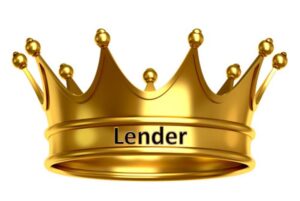 Wholesale lenders and brokers are looking to CFPB to clarify TRID rules for disclosures. Many hope this clarity will come with the new proposed rulemaking in July. For now, concern and confusion exist. (Disclosure)
Wholesale lenders and brokers are looking to CFPB to clarify TRID rules for disclosures. Many hope this clarity will come with the new proposed rulemaking in July. For now, concern and confusion exist. (Disclosure)
Under the new rules, CFPB has made it quite clear that the lender making the loan is the entity responsible for compliance. The lender may delegate this responsibility to a Broker for the issuance of the initial Loan Estimate, or a Closing Agent for the Closing Disclosure. However, in either case, the lender remains totally responsible and accountable for getting things done right.
This has resulted in Wholesale Lenders requiring that they, the Wholesale Lender, issue the initial LE when a loan is originated by a Broker wishing to register the loan with them. Brokers say this ties their hands somewhat and ultimately may hurt the consumer. But, why?
If a Broker knows the various lenders with whom they may register their loans, then they will also know their related rates, fees, and charges. If the lender will allow them to issue the LE, it should reflect the information relative to the program offered by the intended lender. When the loan is closed by that lender the fees/charges should then be in tolerance.
Any change in lenders should only be done to benefit the consumer. If so, the rates/fees/charges of the new lender should be less than or equal to what is initially disclosed. No problem with the switch.
Otherwise, if any fees/charges are increased there needs to be a bona fide change in circumstances, like the borrower requesting the change or no longer qualifies for what was originally offered. This shouldn’t create a major problem. Document the circumstance and issue a revised LE.
Brokers shouldn’t be “shopping” loans after they get an application. They should know the products available to them and their applicants so, when taking the application, they can place the loan with the correspondent offering the best deal.
The intent is to avoid any “bait & switch” tactics. CFPB doesn’t want a Broker issuing a low-ball LE and then registering the loan with a lender having higher or additional fees, costing the consumer more money at the closing.
CFPB wants transparency. They expect and require that, at closing, the consumer will get what was disclosed at application. No hidden fees or charges popping up at the last minute when it’s too late for the consumer to make a change.
To play it safe, Brokers may choose to deal with Correspondent Lenders that opt to issue the LE on behalf of the Broker. All the Broker need do is take the application and submit the information to the lender within 3 business days so the lender may issue the initial LE and take it from there. Of course, in such cases, the Broker loses some control of the transaction.
The alternative is for the Broker to become a Mortgage Banker. As a Mortgage Banker, they can be in charge… and assume all the compliance risks and responsibilities under TRID.
